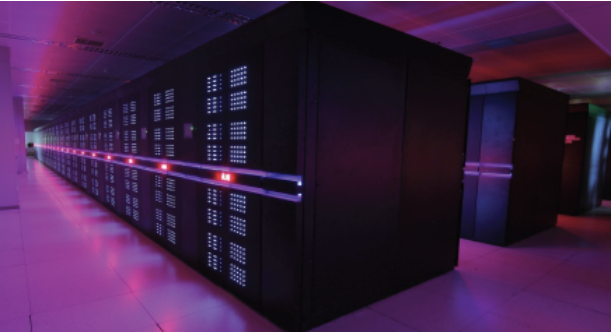Chinese supercomputer destroys speed record and will get much faster
Tianhe-2 hits 31 petaflops with 90 percent of the machine turned on.

Lights on the Tianhe-2 supercomputer change color depending on the power load.
The speed is remarkable partly because the Intel-based Tianhe-2 (also known as Milkyway-2) wasn't even running at full capacity during testing. A five-hour Linpack test using 14,336 out of 16,000 compute nodes, or 90 percent of the machine, clocked in at the aforementioned 30.65 petaflops. (A petaflop is one quadrillion floating point operations per second, or a million billion.) Linpack benchmarks are used to rank the Top 500 supercomputers in the world. The Top 500 list's current champion is Titan, a US system that hit 17.59 petaflops. Tianhe-2 achieved 1.935 gigaflops per watt, which is slightly less efficient than Titan's 2.143 gigaflops per watt.
Tianhe-2's numbers were revealed this week in a paper by University of Tennessee professor Jack Dongarra, who created the Linpack benchmarks and helps compile the bi-annual Top 500 list. Dongarra's paper doesn't say whether Tianhe-2's Linpack measurement was officially submitted for inclusion in the Top 500 list. Ars has asked him if the measurement will put Tianhe-2 on top when the next list is released, but we haven't heard back yet. In any case, the new Top 500 rankings will be unveiled on June 17.
Scheduled to arrive in the National Supercomputer Center in Guangzhou before the end of this year, Tianhe-2 is being assembled and tested at China's National University for Defense Technology (NUDT). Once operational, Tianhe-2 "will provide an open platform for research and education and provide high performance computing service for southern China," Dongarra wrote.
Tianhe-2 is built with Intel Ivy Bridge and Xeon Phi processors. "There are 32,000 Intel Ivy Bridge Xeon sockets and 48,000 Xeon Phi boards for a total of 3,120,000 cores," Dongarra wrote. It has storage of 12.4PB and memory totaling 1.4PB. NUDT built its own proprietary interconnect which Dongarra describes as "an optoelectronics hybrid transport technology" that "uses a fat tree topology with 13 switches each of 576 ports at the top level." Tianhe-2 runs Kylin Linux.
Tianhe-2 has a theoretical peak performance of 54.9 petaflops. Measurements for the Top 500 list always fall somewhat short of theoretical peaks, but Tianhe-2 could certainly improve on its score of 30.65 petaflops if it ran Linpack across the entire system.
Tianhe-2 is the follow-up to Tianhe-1, which was #1 in the world in November 2010 and ranked eighth in the most recent list, with a speed of 2.57 petaflops.



No comments:
Post a Comment